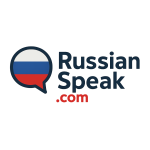Mastering Russian punctuation rules is essential for achieving clarity in written communication. The unique placement of commas, periods, and quotation marks requires careful attention. Understanding how to effectively use colons and semicolons can greatly enhance the connection between ideas. However, many writers struggle with common pitfalls that can obscure meaning. By examining these aspects closely, one can access the potential for clearer expression and more effective writing. What strategies can be employed to avoid these pitfalls?
Table of Contents
ToggleUnderstanding the Basics of Russian Punctuation

Punctuation serves as the backbone of written communication in Russian, guiding readers through the complexities of sentence structure and meaning.
Understanding the basics of Russian punctuation requires familiarity with its punctuation history, which reveals significant cultural differences compared to other languages. In Russian, punctuation marks not only clarify the syntax but also convey nuances of tone and emotion.
Each mark, from the comma to the dash, plays a vital role in shaping the reader’s interpretation. The placement of punctuation can alter meaning dramatically, emphasizing the importance of mastering these rules for effective communication.
The Role of the Period and Comma
Periods and commas are essential punctuation marks in both English and Russian. They play a vital role in shaping the meaning and flow of sentences. A period, known as “точка” (tochka) in Russian [pronounced: TOCH-kah], marks the end of a complete thought. It signals to the reader that an idea is finished, inviting a pause for understanding or reflection. In both languages, the period offers structure and stability, helping writers organize their ideas clearly.
Commas, called “запятая” (zapyataya) [zah-pee-TAH-yah], introduce subtle pauses and groupings within a sentence. They allow writers to add detail, clarify lists, or separate clauses, making complex thoughts easier to follow. In Russian, just as in English, misuse or missing commas can lead to confusion or even change the meaning of a sentence. For example, in the famous phrase “Казнить нельзя помиловать” (“Kazit’ nel’zya pomilovat’” – “To execute, cannot pardon”), the placement of a comma completely changes the sentence’s meaning:
- “Казнить, нельзя помиловать.” = “Execute, cannot pardon.”
- “Казнить нельзя, помиловать.” = “Do not execute, pardon.”
Key Russian words and phrases:
- Пунктуация (punktuatsiya) [poonk-too-AH-tsee-yah] — punctuation
- Предложение (predlozhenie) [pred-lo-ZHEN-ee-ye] — sentence
- Смысл (smysl) [SMIH-sl] — meaning
- Ясность (yasnost’) [YAS-nohst’] — clarity
Some interesting facts:
- The modern comma was popularized by Italian printer Aldus Manutius in the 1400s.
- Russian punctuation rules are strict; for example, commas are required before certain conjunctions such as “но” (no – but) and “а” (a – and/but).
- Periods in Russian function almost identically to those in English, marking the end of declarative sentences.
Mastering periods and commas helps writers express themselves with precision and style. Understanding the unique rules of each language—like Russian’s specific requirements for comma placement—enables even more effective communication. This careful use of punctuation fosters clarity, promotes comprehension, and ensures that ideas are conveyed exactly as intended.
Mastering Quotation Marks and Dialogue
Quotation marks and dialogue punctuation are crucial for clear storytelling in both English and Russian, but each language follows its own set of rules that can easily confuse learners.
In English, double quotation marks (“ ”) are most common. They surround a character’s exact words, and punctuation like periods and commas almost always go inside the closing quotation mark. For example:
She said, “Let’s go to the park.”
If there is a tag after the quote, like she said or he whispered, the comma is placed inside the quotation marks:
“I can’t believe it,” she whispered.
In Russian, the most common quotation marks look like « » (called елочки, pronounced yel-LOCH-kee, meaning “little fir trees”). Sometimes “„ “ or simple double quotes are also used, especially in digital formats. Unlike English, Russian places periods and commas after the closing quotation mark, not inside it. For example:
Она сказала: «Пойдём в парк».
(Ona skazala: “Pay-DYOM v park”. — She said, “Let’s go to the park.”)
Key points about Russian dialogue and quotation marks:
- Russian uses «ёлочки» (yel-LOCH-kee) as the standard quotation mark.
- Commas and periods are placed after the closing quotation mark if they are not part of the quoted material.
- If a speaker’s words are followed by a tag, like “she said,” a dash (–) is often used before direct speech:
– Пойдём в парк, – сказала она.
(– Pay-DYOM v park, – skazala ona. — “Let’s go to the park,” she said.) - Each new speaker’s dialogue starts with a new line (paragraph), just like in English.
Some useful Russian words and phrases related to this topic:
- кавычки (ka-VYCH-ki) — quotation marks
- прямая речь (pree-MA-ya RECH’) — direct speech
- диалог (dee-a-LOG) — dialogue
- тире (tee-REH) — dash (used to introduce dialogue)
- авторское слово (AV-tor-sko-ye SLO-vo) — author’s words (narration or dialogue tags)
The structure of dialogue in Russian often looks like this: – Привет! – сказал он.
(– Privet! – skazal on. — “Hello!” he said.)
Notice that the dash comes before the spoken words, and another dash separates the dialogue from the tag.
Understanding these differences helps avoid confusion and makes both reading and writing dialogue much clearer. Learning to spot and use these cues will help you follow who is speaking and how their words fit into the story. This is especially important in Russian literature, where long passages of dialogue may appear without any quotation marks at all—sometimes only dashes are used!
By paying attention to these details, you can read and write authentic dialogue that feels natural in both Russian and English contexts.
Using Colons and Semicolons Effectively
Colons and semicolons are essential punctuation marks in English that help organize writing and make ideas clearer. Understanding how to use them not only improves your grammar but also allows your writing to flow more smoothly and sound more professional.
Colons:
A colon ( : ) is used to introduce something specific, such as a list, a quotation, an explanation, or a definition. In Russian, the word for colon is “двоеточие” (dvo-e-TOH-chee-ye). Think of a colon as a spotlight: it draws attention to what follows. Here are some ways a colon is used:
- Introducing a list:
- Example: “You will need the following items: a notebook, a pen, and a ruler.”
In Russian: “Вам понадобятся следующие предметы: блокнот, ручка и линейка.”
- Example: “You will need the following items: a notebook, a pen, and a ruler.”
- Explaining or elaborating on the previous clause:
- Example: “He got what he worked for: a promotion.”
In Russian: “Он получил то, к чему стремился: повышение.”
- Example: “He got what he worked for: a promotion.”
A colon should always follow a complete sentence. It signals to the reader that more detail or clarification is coming.
Semicolons:
The semicolon ( ; ) is known in Russian as “точка с запятой” (TOCH-ka s za-pee-TOY), which literally means “dot with comma.” A semicolon links two independent clauses—complete sentences that could stand alone—but which are so closely related that the writer wants to keep them together in one sentence. This punctuation mark shows a stronger connection than a period but a weaker one than a comma with a conjunction.
- Connecting related sentences:
- Example: “She loves reading; her brother prefers sports.”
In Russian: “Она любит читать; её брат предпочитает спорт.”
- Example: “She loves reading; her brother prefers sports.”
- Separating items in a complex list where items themselves contain commas:
- Example: “On our trip, we visited Paris, France; Rome, Italy; and Berlin, Germany.”
In Russian: “Во время путешествия мы посетили Париж, Франция; Рим, Италия; и Берлин, Германия.”
- Example: “On our trip, we visited Paris, France; Rome, Italy; and Berlin, Germany.”
Using semicolons helps avoid confusion in lists with complicated elements and connects ideas that are too closely tied to be separated fully.
Emotional Impact of Proper Punctuation:
When writers use colons and semicolons correctly, their writing becomes easier for readers to understand and more enjoyable to read. Clear punctuation helps the reader follow the logic of each sentence and grasp the relationships between ideas. In Russian, the word for punctuation is “пунктуация” (pun-koo-TAT-see-ya).
Key Russian Words and Phrases:
- Colon — двоеточие (dvo-e-TOH-chee-ye)
- Semicolon — точка с запятой (TOCH-ka s za-pee-TOY)
- Punctuation — пунктуация (pun-koo-TAT-see-ya)
- List — список (SPEE-sok)
- Sentence — предложение (pred-lo-ZHEN-iye)
- Clause — часть предложения (chast’ pred-lo-ZHEN-iya)
Mastering colons and semicolons will give you more control over your writing and help you communicate your thoughts with greater precision—both in English and when translating these concepts into Russian.
The Importance of Dashes and Parentheses
Dashes and parentheses are crucial punctuation marks that help writers structure their thoughts clearly and add depth to their sentences. Each serves a unique function, making writing both precise and engaging.
Dashes—known as “тире” [tee-REH] in Russian—are used to set off additional information, indicate a sudden break or interruption, or emphasize a point. For example, a dash can replace commas or parentheses when the writer wants to create a stronger effect or draw the reader’s attention. In English, you might see:
“The new policy—the one we discussed last week—will go into effect tomorrow.”
Here, the dash highlights the inserted information, giving it more weight than if commas were used.
In Russian, similar usage applies:
«Новое правило — то самое, о котором мы говорили — вступит в силу завтра.»
Notice the use of “—” (тире) to frame extra details. Dashes in both languages often add drama or emphasis.
Parentheses—called “скобки” [SKOHB-kee] in Russian—are used for additional information that is less essential to the main sentence. Parentheses allow writers to include side notes, clarifications, or afterthoughts without breaking the flow of the main idea.
Example in English:
“The experiment (which lasted three days) yielded unexpected results.”
In Russian:
«Эксперимент (который длился три дня) дал неожиданные результаты.»
Here, the phrase in parentheses gives extra information but is not necessary for understanding the main message.
Why These Marks Matter
- Clarity: Both dashes and parentheses help avoid confusion by signaling how information should be grouped or understood.
- Tone: Dashes can make writing more conversational or dramatic, while parentheses create a quieter, more backgrounded aside.
- Structure: Using these marks correctly helps guide readers through complex ideas without overwhelming them.
Interesting Facts
- The dash in English is typically longer than a hyphen and there are two types: en dash (–) and em dash (—). The em dash is more common for breaking up sentences.
- Russian uses the long dash (тире) much more frequently than English in certain sentence structures.
- Parentheses can include whole sentences, just parts of sentences, or even single words for clarification.
Useful Russian Vocabulary
- Dash — тире [tee-REH]
- Parentheses — скобки [SKOHB-kee]
- Punctuation mark — знак препинания [znak pree-pee-NAH-nee-ya]
- To emphasize — подчеркнуть [pahd-chyerk-NOOT’]
- Additional information — дополнительная информация [dah-pahl-NEE-tel’-na-ya een-fahr-mah-TSI-ya]
Mastering dashes and parentheses in both English and Russian writing will make your communication clearer and more expressive. These punctuation marks are small but powerful tools that help you express subtle shades of meaning and keep readers engaged.
Punctuation in Compound and Complex Sentences

Understanding punctuation in compound and complex sentences is essential not just in English, but also in Russian. The rules help clarify meaning, organize thoughts, and guide the reader smoothly through writing. In both languages, punctuation marks like commas (запятые — [zah-PYEE-tye]), semicolons (точка с запятой — [TOCH-ka s zah-pee-TOY]), and conjunctions (союзы — [sa-YOO-zy]) play an important role.
In compound sentences, which join two or more independent clauses (самостоятельные части предложения — [sa-ma-sta-YA-ti-el-ny-ye CHAS-ti pred-la-ZHE-nee-ya]), a comma is usually placed before the coordinating conjunction. For example, in Russian, you might see:
- Мы пошли в магазин, и он купил хлеб. (My poshli v magazin, i on kupil khleb.) Translation: We went to the store, and he bought bread.
Here, the comma comes before “и” (and), which is the coordinating conjunction connecting two independent actions.
Common coordinating conjunctions in Russian include:
- и (and) — [ee]
- но (but) — [no]
- а (but/yet) — [a]
- или (or) — [EE-lee]
In complex sentences, where a dependent clause (придаточное предложение — [pree-DA-toch-na-ye pred-la-ZHE-nee-ye]) is connected to an independent clause, commas are often used to separate the clauses, especially when the dependent clause comes first.
For example:
- Когда я пришёл домой, мама уже готовила ужин. (Kogda ya prishol domoy, mama uzhe gotovila uzhin.) Translation: When I came home, Mom was already making dinner.
The word “когда” (when — [kag-DA]) introduces the dependent clause, and a comma separates it from the main clause.
Some common subordinating conjunctions in Russian are:
- когда (when) — [kag-DA]
- потому что (because) — [pa-TA-moo shto]
- если (if) — [YES-lee]
- хотя (although) — [kha-TYA]
Semicolons are less common in Russian than in English, but they are used to separate independent clauses that are closely related and not joined by a conjunction. In Russian writing, the semicolon can be replaced by a dash (тире — [tee-REH]) more often than in English.
By understanding these rules and how they work in both Russian and English, writers can make their meaning clearer and their writing more effective. Paying attention to punctuation—where to place commas, how to use conjunctions, and when to separate clauses—helps prevent misunderstandings and keeps writing precise.
Key Russian vocabulary for this topic:
- Запятая (comma) — [zah-pyah-TYAH]
- Точка с запятой (semicolon) — [TOCH-ka s zah-pee-TOY]
- Союз (conjunction) — [sa-YOOZ]
- Сложносочинённое предложение (compound sentence) — [SLOZH-na-sa-chee-NYO-nay-e pred-la-ZHE-nee-ye]
- Сложноподчинённое предложение (complex sentence) — [SLOZH-na-pod-chee-NYO-nay-e pred-la-ZHE-nee-ye]
Mastering these punctuation rules will allow you to express nuanced ideas and create well-organized sentences in Russian. The key is to practice recognizing where different types of clauses begin and end, and to become familiar with both coordinating and subordinating conjunctions.
Common Mistakes to Avoid
Mastering punctuation in compound and complex sentences is essential for clear writing, but even experienced writers often fall into common traps. These mistakes can make your ideas harder to understand and sometimes even change the meaning of what you want to say. Let’s look at some of the most frequent issues, how they affect clarity, and relevant Russian words and phrases that connect to these topics.
Misplacing Commas
A misplaced comma can completely change the meaning of a sentence. For example, in English, “Let’s eat, Grandma!” versus “Let’s eat Grandma!” The first means you are inviting your grandmother to eat; the second means you are suggesting eating her! In Russian, the comma (запятая, [za-pya-TYA-ya]) is just as important, especially in complex sentences. For example:
- “Давайте есть, бабушка!” (“Let’s eat, Grandma!”)
- “Давайте есть бабушку!” (“Let’s eat Grandma!”)
Russians also use commas to separate clauses, just like in English. Not using them correctly (неправильное использование запятых) can cause confusion.
Overusing Semicolons
Semicolons (точка с запятой, [TOCH-ka s za-pya-TOY]) are meant to link closely related independent clauses or separate items in a complicated list. Overusing them makes your writing choppy and confusing. In Russian, semicolons are used less frequently than in English, but when they appear, they serve the same purpose: separating large or complex parts of a sentence.
Tip: Only use a semicolon when you could also end the sentence with a period, but you want to show a closer connection between the ideas.
Ignoring Quotation Marks
Quotation marks (кавычки, [ka-VYCH-ki]) are essential for showing when you’re using someone else’s words or highlighting specific phrases. If you forget them or use them incorrectly (неправильное использование кавычек), the reader may not know what was actually said or which words are being emphasized.
For example:
- English: He said, “I’ll be late.”
- Russian: Он сказал: «Я опоздаю». (On skazal: “Ya opozdayu.”)
The Russian style uses « » instead of ” “, though ” ” is also understood.
Incorrect Conjunction Use
Conjunctions (союзы, [sa-YOO-zy]) like “and,” “but,” and “or” join clauses together. Using the wrong conjunction, or skipping needed punctuation before them, can break the flow of your sentence and confuse readers. In Russian, conjunctions like и (and), но (but), или (or) play a similar role. Forgetting a comma before these conjunctions in compound sentences is a common mistake (частая ошибка — забывать запятую перед союзами).
Some helpful reminders:
- In both English and Russian, a comma is usually placed before coordinating conjunctions when they link independent clauses.
- Watch out for run-on sentences (слишком длинные предложения) caused by missing conjunctions or punctuation.
Paying close attention to punctuation—especially commas, semicolons, quotation marks, and conjunctions—can dramatically improve both your English and Russian writing. Each language has its own rules, but the goal is always the same: make your meaning clear and easy to understand. By avoiding these common pitfalls (избегать распространённых ошибок), you’ll communicate your ideas more effectively.
Practical Exercises for Skill Improvement
Practicing punctuation through targeted exercises can greatly enhance a writer’s skill set. Engaging with practical activities allows individuals to internalize punctuation rules, ultimately fostering clarity in their writing.
Below are three effective exercises:
- Punctuation Quizzes: Regularly participate in quizzes that challenge one’s understanding of punctuation rules, reinforcing knowledge through immediate feedback.
- Writing Prompts: Utilize creative writing prompts that encourage the application of various punctuation marks, enabling writers to explore their stylistic choices.
- Peer Review: Exchange written pieces with peers, focusing specifically on punctuation. This collaborative approach promotes critical thinking and nurtures a supportive learning environment.
Punctuate Like a Pro: Unlocking Clarity in Russian Writing
Mastering Russian punctuation is more than just learning where to place commas or which quotation marks to use—it’s about making your thoughts easy to follow and your ideas impossible to misunderstand. By understanding the unique rules for periods, commas, dashes, colons, semicolons, and parentheses, you equip yourself with the tools to write with confidence and precision.
Every comma or dash you use can change the meaning of your sentence. Paying close attention to these details allows you to create writing that is not just correct, but also engaging and expressive. Avoiding common mistakes and practicing with real examples will help you build strong habits for clear communication.
Remember: punctuation is your ally in both Russian and English. With regular practice and a careful eye for detail, you’ll soon find that your writing stands out for its clarity and professionalism—no matter which language you’re using. So keep practicing, stay curious, and let your punctuation guide your readers smoothly through your words!

 Frequently Asked Questions
Frequently Asked Questions
Are There Punctuation Differences Between Formal and Informal Russian Writing?
The differences between formal and informal Russian writing are notable. Formal writing employs stricter punctuation rules, while informal writing allows for more flexibility and creativity, reflecting a casual tone that often disregards conventional punctuation norms.
How Does Punctuation Affect the Tone of a Russian Sentence?
Punctuation nuances greatly influence the tone of a Russian sentence. By manipulating punctuation, writers can create emotional emphasis, guiding readers’ interpretations and enhancing the expressive quality of their language, thereby fostering a deeper connection with the audience.
Can Punctuation Change the Meaning of a Sentence in Russian?
Punctuation greatly influences meaning in Russian, often introducing punctuation ambiguity. Proper use enhances sentence clarity, allowing readers to grasp intended nuances. Misplaced punctuation can alter interpretations, highlighting the importance of mastery for effective communication in the language.
Are There Regional Variations in Russian Punctuation Usage?
Regional dialects in Russia exhibit subtle differences in punctuation standards. Variations may arise due to local linguistic influences, impacting sentence structure and clarity. Understanding these nuances is essential for effective communication across diverse Russian-speaking regions.



